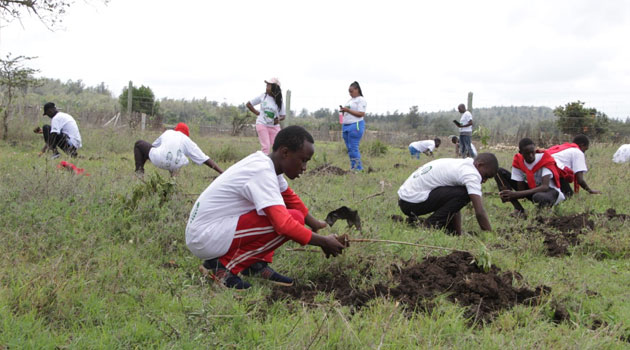
Youth Could Hold the Key to Unlock Environmental Solutions » Capital News
By Eliud Mutahi
Today marks World Environment Day, a United Nations global event established in 1973 to raise awareness about protecting our planet. Over the years, this day has gained increasing significance, especially in light of the devastating effects of climate change.
June 5 has now become a key occasion for the United Nations Environment Programme (UNEP) to inspire governments, populations, and organizations to participate in mitigating environmental degradation, which is a primary driver of global warming.
This year’s theme, “Land Restoration, Desertification, and Drought Resilience,” under the slogan “Our Land, Our Future, We Are,” emphasizes the urgent need to heal and restore Earth’s damaged ecosystems. Despite numerous campaigns by millions of stakeholders globally to address climate change, challenges remain, often seeming insurmountable.
According to the Intergovernmental Panel on Climate Change (IPCC) in 2019, major human drivers of desertification interacting with climate change include the expansion of croplands, unsustainable land management practices, and increased pressure on land from population and income growth. Clean, healthy, and productive land is critical to food security and economic growth, achievable only if the ambitious targets set in the Paris Agreement are accelerated and implemented globally.
With more than 40 percent of the world’s land degraded, this year’s theme calls for concerted efforts from both governments and the private sector to save our planet. Droughts continue to ravage developing nations, and it is believed that more than three-quarters of the global population will be affected by 2050 if no action is taken. In countries like Kenya and others in Sub-Saharan Africa, desertification has been linked to the loss of biodiversity and conflicts between humans and wildlife over food, water, and shelter.
In recent years, human migration has become quite common during extreme weather conditions, resulting in global calls for urgent action to stem the growing number of climate refugees.
Research by Africa Harvest, an international biotechnology firm based in Kenya, has been instrumental in demonstrating the link between best practices and technologies in transforming the landscape and economic well-being of communities in Kenya’s arid and semi-arid regions, as well as other African countries. This transformation is accelerated through collaboration with research organizations, government, and development partners.
To achieve national and global promises on reversing deforestation, land degradation, and halting desertification and drought, Africa Harvest has highlighted the importance of involving youth as stakeholders in decision-making and implementing strategic plans.
One significant finding indicates that to engage upcoming generations in climate change programs, decision-makers at top government levels and institutions need to target youth under 35 years old, who constitute more than 60 percent of the population in most African countries.
Various research projects in Africa suggest that deforestation can be significantly reduced if considerable incentives are provided to engage the youthful population. Africa Harvest’s scientific research, which has been cited in numerous reports, targets this age group to disseminate proven practices and technologies that could transform their economic status.
Commercializing high-value trees in a country like Kenya, which has more than 80 percent arid and semi-arid lands, could significantly transform these dry regions into commercial hubs.
Practical research projects by stakeholder organizations working in dry regions of Africa, including Kenya, show that young people are more adaptable to modern skills, technologies, and practices.
This adaptability can help integrate trees, crops, and livestock, promoting sustainable agro-forestry systems suitable for various agro-ecological regions. Such systems could mitigate climate change and unlock the economic potential for young stakeholders in arid and semi-arid regions.
Several environmental restoration reports agree that adopting agro-forestry systems suitable for various agro-ecological regions and needs can sustainably mitigate climate change. Additionally, this approach could unlock significant economic opportunities for young stakeholders in our arid and semi-arid regions.
The writer is an environmental expert working with Africa Harvest.
